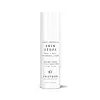What's inside
What's inside
 Key Ingredients
Key Ingredients

 Benefits
Benefits

 Concerns
Concerns

 Ingredients Side-by-side
Ingredients Side-by-side

Rosa Canina Fruit Extract
AstringentCoco-Caprylate/Caprate
EmollientCaprylic/Capric Triglyceride
MaskingGlyceryl Stearate
EmollientCoco-Caprylate
EmollientSodium Olivoyl Glutamate
CleansingCetearyl Alcohol
EmollientCetyl Alcohol
EmollientStearyl Alcohol
EmollientPhenethyl Alcohol
MaskingPentylene Glycol
Skin ConditioningPropanediol
SolventGlycerin
HumectantAcer Saccharum Sap
HumectantOenothera Biennis Oil
EmollientCeramide NP
Skin ConditioningRosa Moschata Seed Oil
EmollientRibes Nigrum Seed Oil
EmollientPunica Granatum Seed Oil
EmollientXanthan Gum
EmulsifyingTocopherol
AntioxidantRosa Canina Fruit Extract, Coco-Caprylate/Caprate, Caprylic/Capric Triglyceride, Glyceryl Stearate, Coco-Caprylate, Sodium Olivoyl Glutamate, Cetearyl Alcohol, Cetyl Alcohol, Stearyl Alcohol, Phenethyl Alcohol, Pentylene Glycol, Propanediol, Glycerin, Acer Saccharum Sap, Oenothera Biennis Oil, Ceramide NP, Rosa Moschata Seed Oil, Ribes Nigrum Seed Oil, Punica Granatum Seed Oil, Xanthan Gum, Tocopherol
Water
Skin ConditioningPropylene Glycol
HumectantEthoxydiglycol
HumectantNiacinamide
SmoothingPolyglyceryl-3 Methylglucose Distearate
EmulsifyingRosa Canina Fruit Oil
EmollientHippophae Rhamnoides Seed Oil
Skin ProtectingHippophae Rhamnoides Fruit Oil
Skin ProtectingPanthenol
Skin ConditioningDimethicone
EmollientGlycerin
HumectantSqualane
EmollientCetyl Alcohol
EmollientVaccinium Macrocarpon Seed Oil
Skin ConditioningTocopherol
AntioxidantCamellia Sinensis Leaf Extract
AntimicrobialCeramide NP
Skin ConditioningCeramide AP
Skin ConditioningCeramide EOP
Skin ConditioningPhytosphingosine
Skin ConditioningCholesterol
EmollientSodium Hyaluronate
HumectantSodium Lauroyl Lactylate
EmulsifyingCarbomer
Emulsion StabilisingXanthan Gum
EmulsifyingDiazolidinyl Urea
PreservativeMethylparaben
PreservativePropylparaben
PreservativeDisodium EDTA
Water, Propylene Glycol, Ethoxydiglycol, Niacinamide, Polyglyceryl-3 Methylglucose Distearate, Rosa Canina Fruit Oil, Hippophae Rhamnoides Seed Oil, Hippophae Rhamnoides Fruit Oil, Panthenol, Dimethicone, Glycerin, Squalane, Cetyl Alcohol, Vaccinium Macrocarpon Seed Oil, Tocopherol, Camellia Sinensis Leaf Extract, Ceramide NP, Ceramide AP, Ceramide EOP, Phytosphingosine, Cholesterol, Sodium Hyaluronate, Sodium Lauroyl Lactylate, Carbomer, Xanthan Gum, Diazolidinyl Urea, Methylparaben, Propylparaben, Disodium EDTA
 Reviews
Reviews

Ingredients Explained
These ingredients are found in both products.
Ingredients higher up in an ingredient list are typically present in a larger amount.
Ceramide NP is a type of ceramide and formally known as ceramide 3.
Ceramides are intercellular lipids naturally found in our skin that bonds dead skin cells together to create a barrier. They are known for their ability to hold water and thus are a great ingredient for dry skin.
Ceramides are an important building block for our skin barrier. A stronger barrier helps the skin look more firm and hydrated. By bolstering the skin ceramides act as a barrier against irritating ingredients. This can help with inflammation as well.
If you would like to eat ceramides, sweet potatoes contain a small amount.
Read more about other common types of ceramides here:
Ceramide AP
Ceramide EOP
Cetyl Alcohol is a fatty alcohol. Fatty Alcohols are most often used as an emollient or to thicken a product.
Its main roles are:
Though it has "alcohol" in the name, it is not related to denatured alcohol or ethyl alcohol.
The FDA allows products labeled "alcohol-free" to have fatty alcohols.
Learn more about Cetyl AlcoholGlycerin is already naturally found in your skin. It helps moisturize and protect your skin.
A study from 2016 found glycerin to be more effective as a humectant than AHAs and hyaluronic acid.
As a humectant, it helps the skin stay hydrated by pulling moisture to your skin. The low molecular weight of glycerin allows it to pull moisture into the deeper layers of your skin.
Hydrated skin improves your skin barrier; Your skin barrier helps protect against irritants and bacteria.
Glycerin has also been found to have antimicrobial and antiviral properties. Due to these properties, glycerin is often used in wound and burn treatments.
In cosmetics, glycerin is usually derived from plants such as soybean or palm. However, it can also be sourced from animals, such as tallow or animal fat.
This ingredient is organic, colorless, odorless, and non-toxic.
Glycerin is the name for this ingredient in American English. British English uses Glycerol/Glycerine.
Learn more about GlycerinTocopherol (also known as Vitamin E) is a common antioxidant used to help protect the skin from free-radicals and strengthen the skin barrier. It's also fat soluble - this means our skin is great at absorbing it.
Vitamin E also helps keep your natural skin lipids healthy. Your lipid skin barrier naturally consists of lipids, ceramides, and fatty acids. Vitamin E offers extra protection for your skin’s lipid barrier, keeping your skin healthy and nourished.
Another benefit is a bit of UV protection. Vitamin E helps reduce the damage caused by UVB rays. (It should not replace your sunscreen). Combining it with Vitamin C can decrease sunburned cells and hyperpigmentation after UV exposure.
You might have noticed Vitamin E + C often paired together. This is because it is great at stabilizing Vitamin C. Using the two together helps increase the effectiveness of both ingredients.
There are often claims that Vitamin E can reduce/prevent scarring, but these claims haven't been confirmed by scientific research.
Learn more about TocopherolXanthan gum is used as a stabilizer and thickener within cosmetic products. It helps give products a sticky, thick feeling - preventing them from being too runny.
On the technical side of things, xanthan gum is a polysaccharide - a combination consisting of multiple sugar molecules bonded together.
Xanthan gum is a pretty common and great ingredient. It is a natural, non-toxic, non-irritating ingredient that is also commonly used in food products.
Learn more about Xanthan Gum